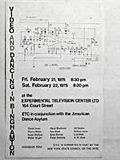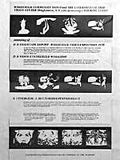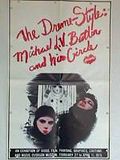History 1975-76
|
|
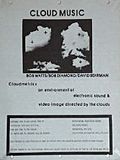
|
The Residency Program included artists Nam June Paik, Phil Jones of Ithaca Video Projects, Ken Marsh and Ken Jacobs. The National Endowment for the Arts in 1975 provided support for initial research into the computer-video processing project, which was expanded by Jones, McArthur, Wright and Brewster to incorporate parallel research efforts by Woody and Steina Vasulka and Jeffrey Schier. The LSI-11 computer was chosen as the standard. Jones developed hard and soft edged keyers and a sequential switcher, which along with the Jones Colorizer was incorporated into the processing system. A commercially available SEG was modified to incorporate these keyers. A 64 point push button switching matrix was designed and built. We began to write a manual, developed initially to be used as a operator's guide to «" reel to reel equipment, portapaks and editing equipment. The concept was later broadened to include step-by-step construction information on a Paik Raster Control Unit. By 1985, the information was expanded to include systems structure and theory of electronic signals and processing techniques. These manuals have been distributed to many individuals and organizations over the years. Cloud Music by Robert Watts, David Behrman and Bob Diamond was presented at Center. |
History 1976-77
|
|
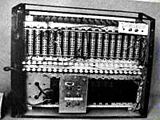
|
Artists such as Barbara Buckner, Aldo Tambellini, Nam June Paik and the American Dance Asylum continued to participate in the Residency Program. The exhibition series, Video by Videomakers, was begun; this is the first and only video programming in the region and brings artists such as Beryl Korot, Barbara Buckner and many others to the area to present and discuss works. The computer was installed as part of the system and made available to artists; software research began. For the second year, we conducted a series of workshops in school districts throughout the region, in collaboration with Binghamton's major cultural institution, Roberson Center. |
